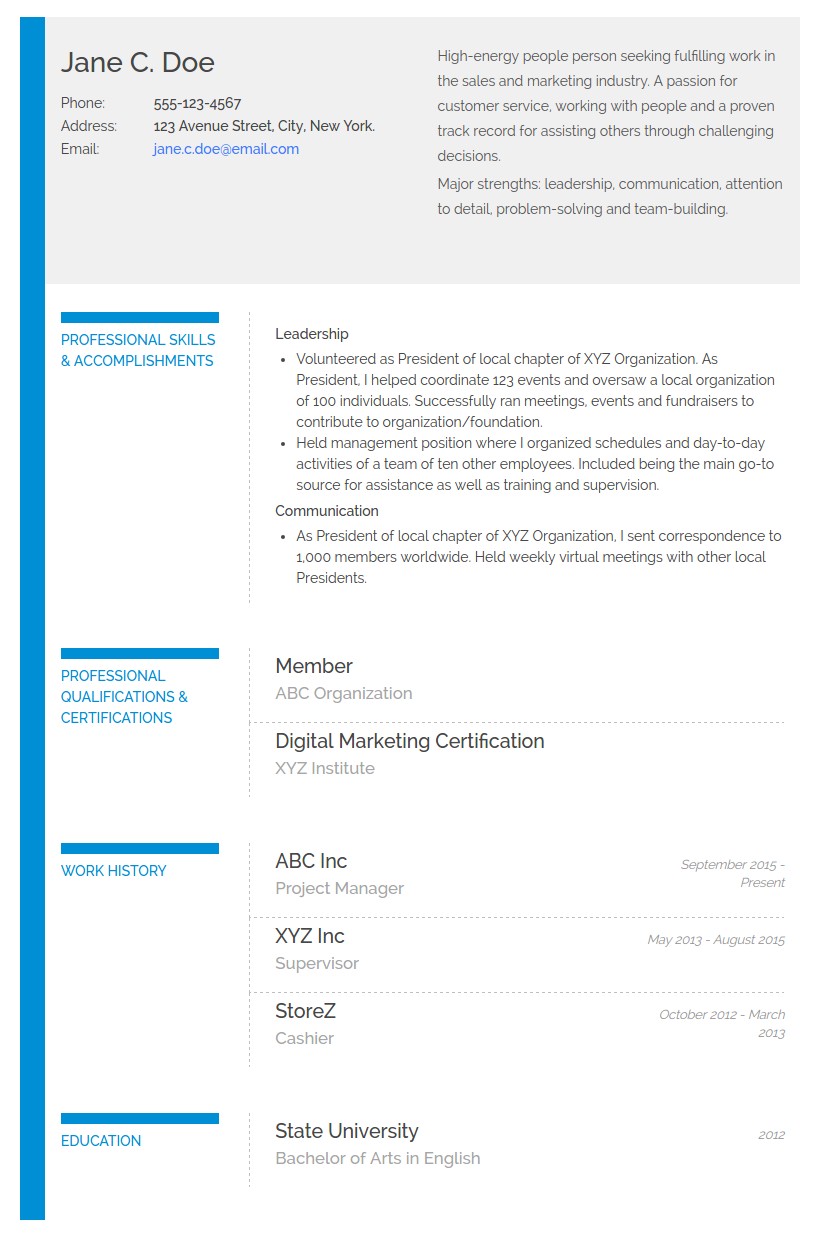
Whether you’re just entering the workforce or you’ve been working professionally for years, your resume is one of the most important documents for advancing your career. As the first introduction to your skills and personality, you want your resume to accurately reflect what you’re capable of.
Chances are, you’ve been told a resume should showcase your work history in a reverse chronological order. For someone who has followed a traditional path to advancing their career, this can be the best way to outline your accomplishments and relevant skills.
However, a reverse chronological resume isn’t right for everyone. Sometimes, a functional or skills-based resume just makes more sense.
But what exactly is a skills-based or functional resume and when should it be used? Let’s break down when you may want to consider using this type of resume.
A functional resume, also referred to as a skills-based resume, outlines your skills and professional accomplishments rather than your work history. While you still include a brief overview of the places you’ve worked and your job titles, the main points of your resume centers on your skills — not your history of employment.
There are a few different circumstances where a functional resume makes more sense than a traditional reverse chronological resume. Let’s take a look at what a few of those may be.
Not everyone should use a functional or skills-based resume. Because it’s structured differently, it may not always be well-received when applying to a new job.
However, depending on your situation, the position you’re applying for and your previous work experience, a functional resume may do a better job at showing off your qualifications.
Here are some scenarios where you may want to use a functional or skills-based resume instead of a reverse chronological resume:
A functional resume is great any time you feel like your work experience doesn’t accurately represent what you’re capable of achieving. If you feel like outlining your skills would give you an advantage when applying to a company, then consider creating a skills-based resume for your application.
When creating a traditional reverse chronological resume, it’s pretty straightforward to structure your work listings. But when you’re creating a skills-based resume, you have a bit more room to get creative.
Here are some important steps to follow to ensure you’re creating a skills-based resume that accurately describes your capabilities:
Just like with a reverse chronological resume, feel free to get a bit creative about the way you lay out your details. However, you always want to put the most important information close to the top. Never assume the hiring manager will read the entire page of your resume, so be sure to put any information you want them to see as high up as possible.
Here is an example of a skills-based resume created using Resumonk's Bold template:

Here is the text version of the above skills-based resume example:
-----------------------------------------
Jane C. Doe 123 Avenue Street, City, NY, 11111
Phone: 555-123-4567
Email: [email protected]
Summary High-energy people person seeking fulfilling work in the sales and marketing industry. A passion for customer service, working with people and a proven track record for assisting others through challenging decisions.
Major strengths: leadership, communication, attention to detail, problem-solving and team-building.
PROFESSIONAL SKILLS AND ACCOMPLISHMENTS
Leadership
Communication
PROFESSIONAL QUALIFICATIONS AND CERTIFICATIONS
WORK HISTORY
EDUCATION
-----------------------------------------
Don’t be overly intimidated about creating your functional resume. While it may feel a bit unnatural to go against the traditional way of creating a resume, a functional resume can help prove you’re qualified for the position. With the right information, you can land a job you never thought possible.
Consider the most important information a hiring manager may want to see when they look at your resume. Even if you don’t have the direct work experience to show you have these qualifications, find some other skill or relevant accomplishment that can prove you know how to perform that style of task.
Remember — your functional resume should be tailored to the unique position you’re applying to. Be sure to switch it up, change up the skills, and adjust your accomplishment bullets to reflect what the company is looking for in the position they’re trying to fill. Tailoring your message to fit the needs of the position and the hiring manager can increase your chances of getting to the first interview.
If you don’t have the work qualifications to apply for a job you believe you’d be great at, don’t allow it to hold you back.
The Resumonk AI Resume Builder's features, including AI Rewrites, AI Suggestions, and effortless imports from LinkedIn or PDF/DOCX files, are designed to help you create an impressive functional resume. Start your free trial today!
This article was originally published on our blog on Feb 03 2020 and authored by Sarah Landrum. It was edited and republished in its present form by Team Resumonk on Sep 15 2025.